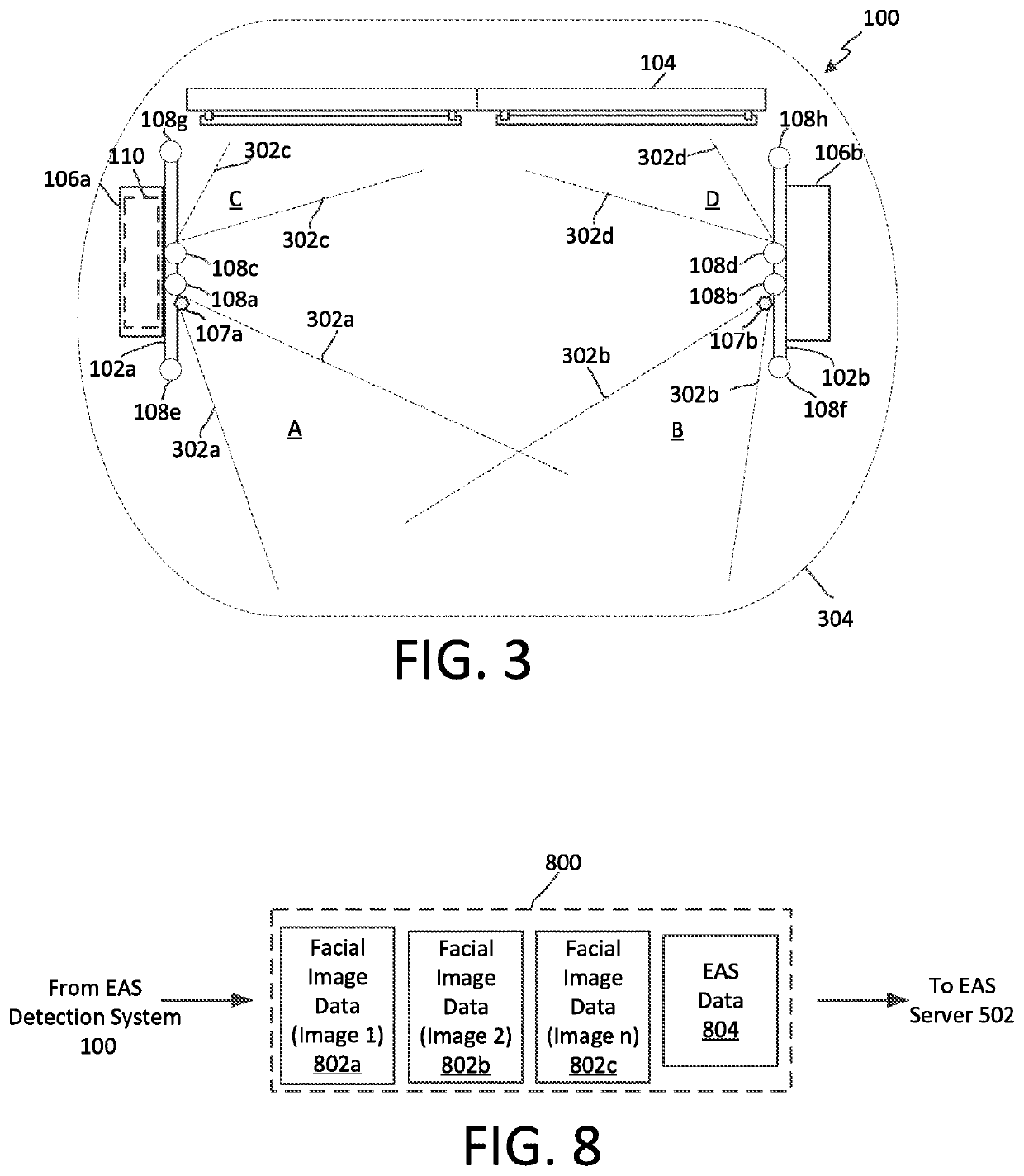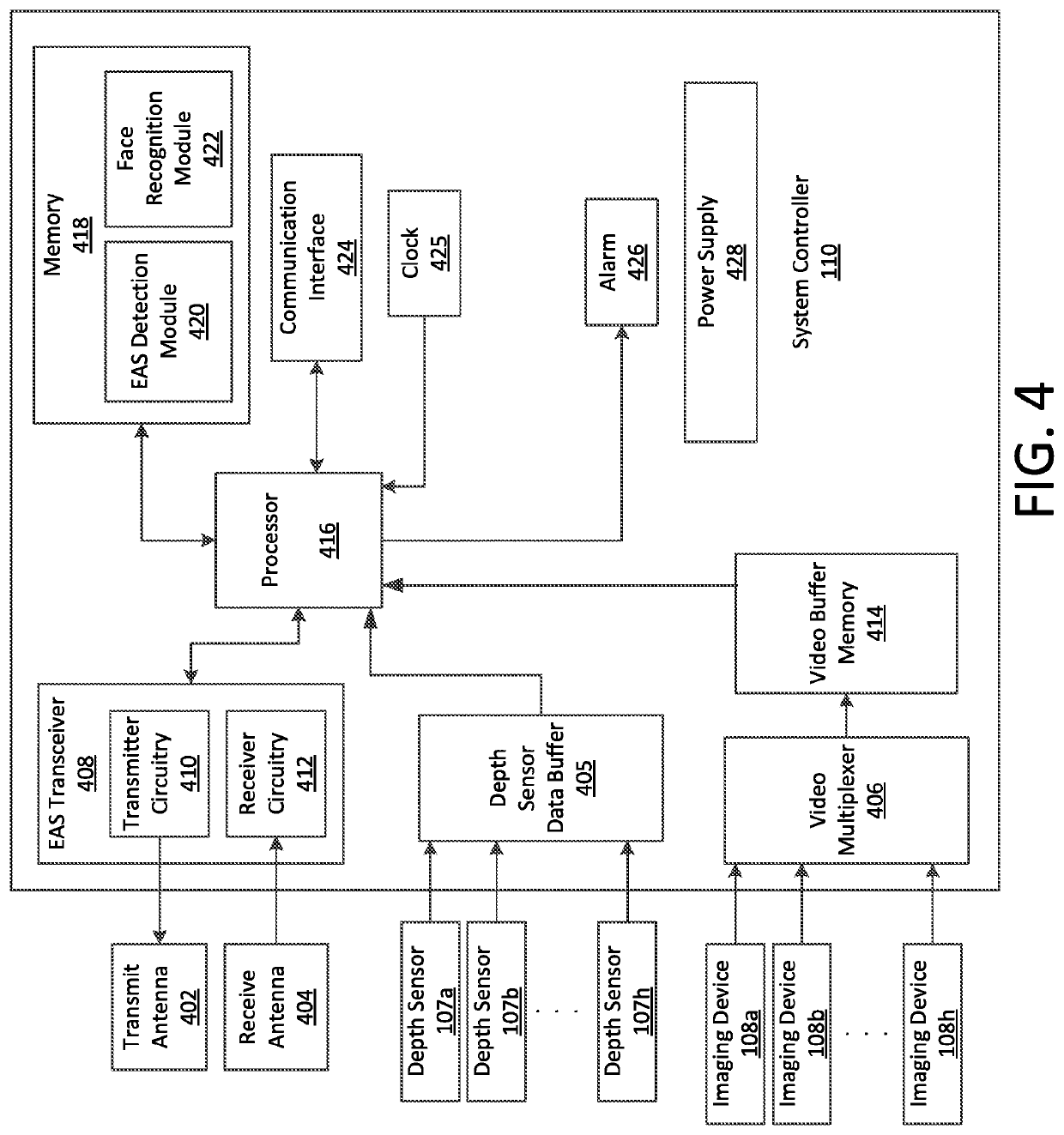Predictive theft notification
a technology of theft notification and facial recognition, applied in the field of predictive notification, can solve the problems of insufficient training of retail store clerks to deal with aggressive groups of people, alarm initiated as thieves rush out of the exit, and often too late for theft prevention purposes, so as to reduce the effect of predictive notification
- Summary
- Abstract
- Description
- Claims
- Application Information
AI Technical Summary
Benefits of technology
Problems solved by technology
Method used
Image
Examples
Embodiment Construction
[0029]This disclosure is best understood with reference to the attached figures. The figures are not drawn to scale and they are provided merely to illustrate certain example scenarios. Several aspects are described below with reference to example applications for illustration. It should be understood that numerous specific details, relationships, and methods are set forth to provide a full understanding. The various scenarios are not intended to limit the invention to the illustrated ordering of acts or events, as some acts may occur in different orders and / or concurrently with other acts or events. Furthermore, not all illustrated acts or events are required to implement a methodology disclosed herein.
[0030]The operation of an EAS system can be improved by including advanced facial identification capability. For example, an EAS system can be improved by facilitating identification of specific individuals by comparison of their facial features to known biometric models which are st...
PUM
 Login to View More
Login to View More Abstract
Description
Claims
Application Information
 Login to View More
Login to View More - R&D
- Intellectual Property
- Life Sciences
- Materials
- Tech Scout
- Unparalleled Data Quality
- Higher Quality Content
- 60% Fewer Hallucinations
Browse by: Latest US Patents, China's latest patents, Technical Efficacy Thesaurus, Application Domain, Technology Topic, Popular Technical Reports.
© 2025 PatSnap. All rights reserved.Legal|Privacy policy|Modern Slavery Act Transparency Statement|Sitemap|About US| Contact US: help@patsnap.com



